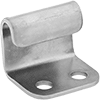Filter by
Load Securement Type
Weight Capacity
Overall Length
Mounting Screw Size
Base Material
Mounting Hole Center-to-Center Length
Export Control Classification Number (ECCN)
DFARS Specialty Metals
Material Handling
Building and Machinery Hardware
Communication














































